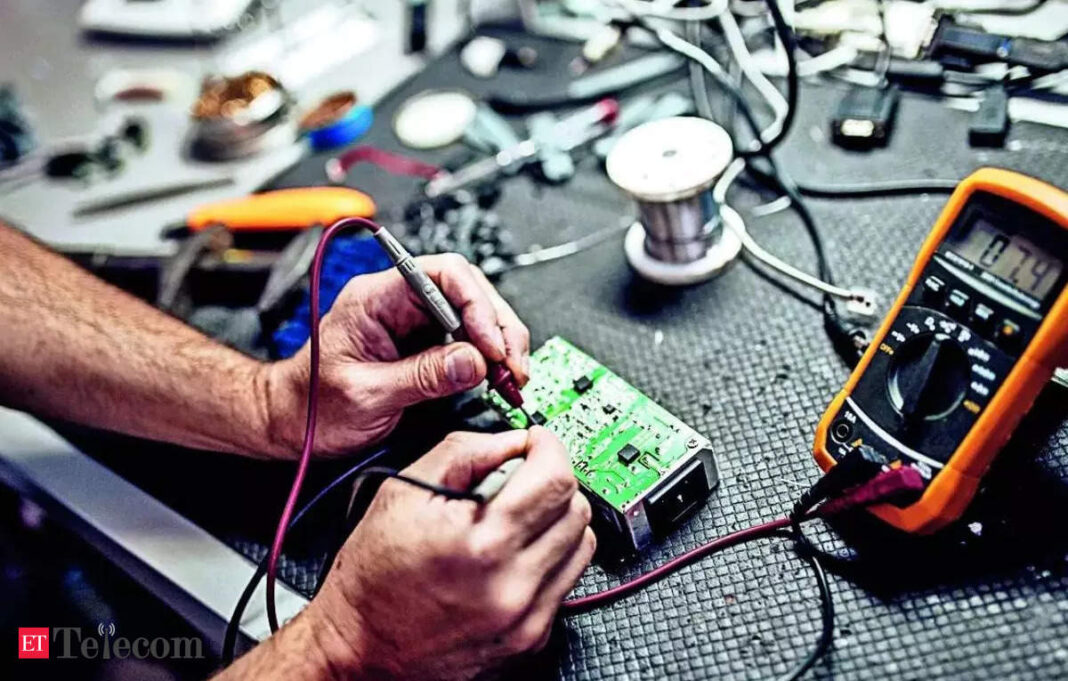In Short:
The new financial support plan for India’s electronics components manufacturing may create fewer jobs than expected. Industry experts warn these jobs will need more skilled technicians and rely on automation. For every ₹1 crore invested, only four jobs are created in components, compared to ten in assembly. The government aims for 200,000 jobs over five years linked to direct employment and investment.
New Delhi: The anticipated financial support initiative aimed at establishing an electronics components manufacturing ecosystem may not generate as many direct employment opportunities as the rapidly expanding electronics manufacturing services (EMS) and assembly sectors. This is primarily because many lower-level components and sub-assemblies are dependent on sophisticated machinery and significant automation, according to industry executives.
Investment and Employment Dynamics
The investment-to-employment ratio for component manufacturing is considerably lower when compared to mobile phone or electronics product assembly. Typically, the EMS sector creates ten or more jobs for every Rs 1 crore invested, while component manufacturing only yields around four jobs per the same investment. Notably, the jobs in component manufacturing also demand advanced technical qualifications and cannot be easily filled through mass recruitment, as seen in mobile phone assembly lines.
Government Initiatives
This conversation around job creation arises following a recent meeting between the government and industry stakeholders, wherein they deliberated on a financial package potentially worth Rs 40,000 crore aimed at building a sustainable component manufacturing ecosystem in India.
“The final assembly of products invariably necessitates more on-the-floor staff. The further one goes into value addition, the less the labor requirement becomes,” stated an industry executive who was privy to the meeting discussions.
Competition and Labor Insights
The executive further remarked that India’s comparative advantage of abundant manpower may not significantly influence this sector, and could, in fact, introduce complexities into the system. In this scenario, India competes directly with regions like Taiwan and China, where capital requirements are similar but labor demands are minimal.
Job Creation Goals
The government’s strategy includes correlating incentives with the number of direct jobs generated, investment levels, and incremental revenues achieved by participating entities. Currently, the objective is to create approximately 200,000 direct jobs over a period of five years through the mobile phone production-linked incentive (PLI) scheme set to conclude in fiscal 2026.
Challenges in Component Manufacturing
Industry representatives have articulated that while a component ecosystem may indeed foster job creation, the nature and skill level of the jobs will differ significantly from those anticipated under the mobile phone and IT hardware PLI frameworks.
“Due to the precision required, both sub-assemblies and components used in mobile phones necessitate a high degree of automation. Components in particular require more automation, whereas sub-assemblies may need less,” another industry executive present at the meeting elaborated.
Skill Requirements
This executive explained that components such as transistors, capacitors, and PCBs are almost entirely automated, necessitating skilled technicians to manage high-end machinery for precise fabrication of sub-assemblies, display modules, motherboards, and even housings.
“Currently, in EMS, the employee composition stands at approximately 80% regular staff to 20% technicians. However, for sub-assemblies, the ratio shifts to around 50% technicians, 30% operators, and 20% floor staff. In components, this remains similar, but technicians comprise 50% while associates represent 30%,” he continued.
Linking Incentives to Employment
The executive concurred that the incentive scheme should strategically link subsidies to job creation. “While it is important to maintain a production-linked structure focused on throughput and productivity, integrating employment-linked incentives could serve as a vital addition to this package,” he proposed.





